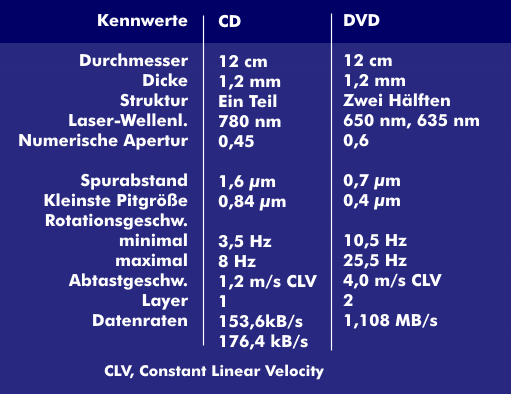optical memory
Optical storage media are convincing due to their high storage density and storage capacity, they are durable, have a low susceptibility to errors and faults, and low manufacturing costs.
The storage of data on optical storage media is based on the thermal impact of a laser beam into the plastic substrate of the storage disk surface. This impact occurs in the rhythm of the bit pattern and leads to the melting of the storage layer. A hole is created in the surface, which leads to an altered reflection of the reading beam when the information is read out.
Among optical storage media, there are those that are read-only, others that are writable once, and still others that are writable many times. The former include CD-DA(DigitalAudio), CD-I (Interactive), CD-R (Recordable), CD-ROM, CD-ROM/XA (Read Only Memory Extended Architecture), DVD-ROM and the image disc. In terms of recordable and readable, there are the CD-RW (Rewritable), Photo CD, Video CD, DVD-R and DVD-RAM, among others.
An essential criterion for optical storage is the storage density, which is given by the track spacing and the size of the pits and lands, and another is the access times, which range from a hundred to a few hundred milliseconds. DVDs, for example, which use shorter laser wavelengths and multiple layers, achieve storage capacities of up to 17 GB, which is 27 times the value of a CD.
In further developments such as the Blu-Ray disc, Ultra Density Optical( UDO), HD-DVD, Enhanced Versatile Disc( EVD) and the Professional Disc for Data( PDD), the optical resolution is further increased by an improved numerical aperture of the laser light and by a shorter wavelength. With these optical storage media, storage capacities of 100 GB and above are achieved.

